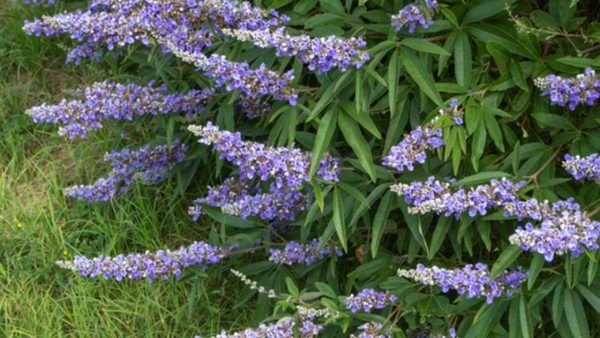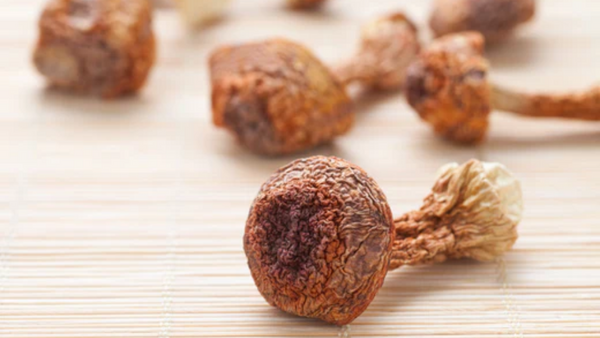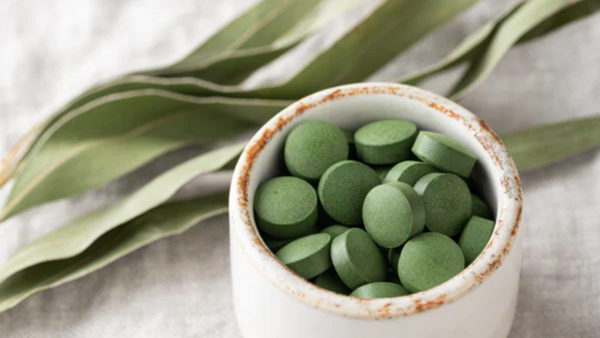Chasteberry is an ancient medicinal plant that is used to treat many women's complaints. It is said to relieve menstrual and menopausal symptoms, help with PMS and can even increase libido.
What is chasteberry?
Chasteberry, also known as monk's pepper (lat. Vitex agnus-castus), is a plant that is used in natural medicine to treat various ailments. Chasteberry belongs to the Verbenaceae family and is native to the Mediterranean region. The plant has purple flowers and edible, dark berries.

Ingredients of monk’s pepper
Monk’s pepper is rich in secondary plant substances with pharmacological effects:
- Flavonoids , which have antioxidant and anti-inflammatory properties.
- Iridoids , which also have anti-inflammatory and antioxidant effects.
- Diterpenes , which can inhibit the release of prolactin and thus help with hormonal complaints such as PMS and menstrual cramps.
The exact ingredients of monk’s pepper can vary greatly depending on the variety, time of harvest and processing.
Effects of chasteberry
The effect of chasteberry is due to the fact that it lowers prolactin levels. [1]
Prolactin is a hormone produced in the pituitary gland. It plays an important role in regulating the female reproductive system and is also present in men, but in smaller amounts.
Among other things, a low prolactin level ensures that the body's own progesterone production increases, which in turn counteracts estrogen dominance.
In estrogen dominance, the estrogen/progesterone ratio is not in balance. There is too much estrogen compared to progesterone. This can lead to menstrual disorders such as irregular or heavy periods, as well as premenstrual syndrome (PMS).
Chasteberry lowers prolactin levels by binding the diterpenes it contains to dopamine receptors. This imitates the effect of dopamine. Dopamine is known for its prolactin-inhibiting effect.
The mystery of the double effect
Monk's pepper is known for its libido-enhancing effect, among other things. However, it was also used by nuns and monks in the Middle Ages to suppress female libido. This is why monk's pepper is also known as chaste lamb.
How can this be explained?
In order for chasteberry to inhibit the amount of prolactin, relatively large amounts are needed. In small amounts, chasteberry has the opposite effect: it increases prolactin production.
That is why it is very important to dose monk’s pepper correctly.
Chasteberry for premenstrual syndrome
PMS occurs in the days before menstruation and is accompanied by numerous symptoms such as lower abdominal cramps, headaches and back pain, fatigue and mood swings.
The causes of PMS are not understood in detail, but elevated prolactin levels appear to promote PMS. Therefore, it is logical that chasteberry, with its prolactin-lowering effect, could be helpful. Studies actually suggest that chasteberry can relieve PMS symptoms. [2]
Monk’s pepper for menstrual disorders
There are many different types of menstrual disorders: menstruation can be too light or too heavy, cycles can be too long, too short or simply very irregular. Many women often stop having their periods altogether.
Polycystic ovary syndrome (PCOS) is a common cause of menstrual disorders. Hormonal imbalances, such as those that can occur after stopping taking the pill, can also lead to irregular periods.
In some studies, chasteberry appears to be able to relieve menstrual disorders. [3] However, further research is needed here.
Chasteberry for period pain
Many women suffer from severe pain during menstruation. The contraceptive pill is known to be able to relieve these symptoms. Unfortunately, however, the contraceptive pill is not without side effects and is also a major nutrient thief .
Chasteberry also seems to be able to help with period pain. In one study, the effect was even comparable to the contraceptive pill. [4]
Monk’s pepper for menopausal symptoms
Unfortunately, menopause brings with it numerous symptoms such as hot flashes, sweating, sleep disorders and mood swings, even depression.
During menopause, both estrogen and progesterone levels drop. Progesterone levels often drop significantly more, resulting in estrogen dominance. Estrogen dominance is suspected of promoting menopausal symptoms. Since chasteberry appears to counteract estrogen dominance, it is often used to treat menopausal symptoms. [5]

Take chasteberry
Chasteberry is generally well tolerated and rarely causes side effects. However, digestive problems or headaches can occasionally occur.
Since chasteberry interferes with the hormonal balance, it should not be taken during puberty, pregnancy or breastfeeding.
For therapeutic purposes, chasteberry is used as an extract. The dosage is crucial here: too low a dose can increase the prolactin level and thus have undesirable effects. A high-quality preparation is also free of unnecessary additives such as separating and binding agents, colorings, sweeteners and preservatives.
The chasteberry from Viktilabs is appropriately dosed with 10 mg of 4:1 chasteberry extract. The preparation is developed in a German laboratory according to the highest quality standards.
[1] https://www.cjmb.org/uploads/pdf/pdf_CJMB_465.pdf
[2] https://pubmed.ncbi.nlm.nih.gov/29063202/
[3] https://pubmed.ncbi.nlm.nih.gov/32549844/
[4] https://www.cochranelibrary.com/central/doi/10.1002/central/CN-01120278/full
[5] https://www.tandfonline.com/doi/abs/10.1080/09513590701200900


















